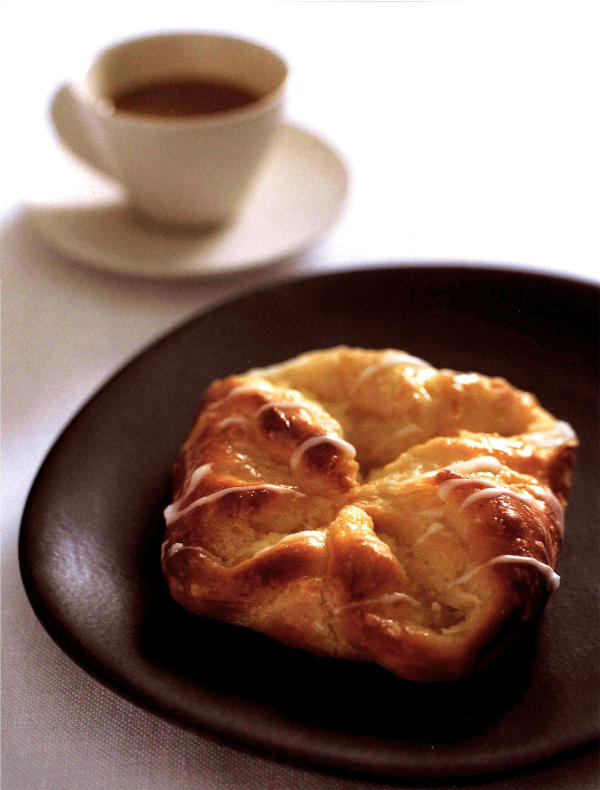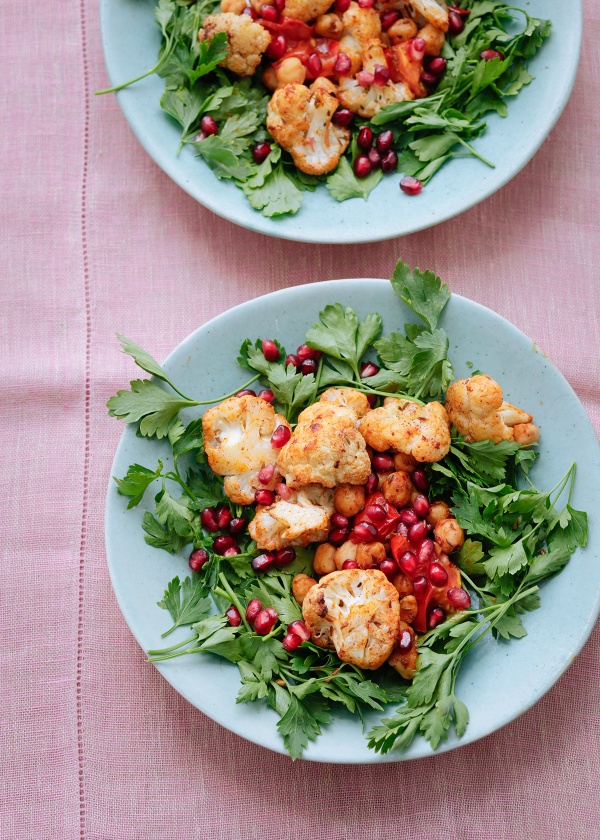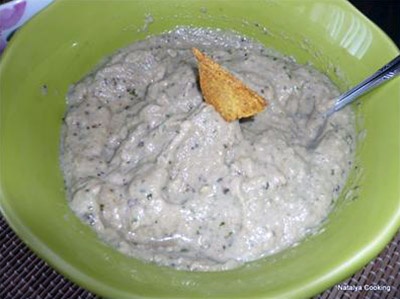Danish Pastries
by Nigella. Featured in HOW TO BE A DOMESTIC GODDESSIntroduction
I came across Beatrice Ojakangas’ joyfully easy way of making Danish pastry in Dorie Greenspan’s Baking with Julia. I’ve adapted it to fit my practice and prejudices, but her idea of mixing everything in the food processor is liberating. It’s good to know, indeed crucial, that this still produces an authentic Danish pastry. Beatrice Ojakangas helpfully writes, “Don’t think you’re cheating by taking the fast track – this is the way it’s done these days all over Denmark.”
And I’m particularly pleased to have a Cheese Danish, as they are my favourite, and I don’t see them in bakeries, so have to make my own! By the way, when I say cheese, don’t think of it in a savoury way but, rather, as in cheesecake.
I came across Beatrice Ojakangas’ joyfully easy way of making Danish pastry in Dorie Greenspan’s Baking with Julia. I’ve adapted it to fit my practice and prejudices, but her idea of mixing everything in the food processor is liberating. It’s good to know, indeed crucial, that this still produces an authentic Danish pastry. Beatrice Ojakangas helpfully writes, “Don’t think you’re cheating by taking the fast track – this is the way it’s done these days all over Denmark.”
And I’m particularly pleased to have a Cheese Danish, as they are my favourite, and I don’t see them in bakeries, so have to make my own! By the way, when I say cheese, don’t think of it in a savoury way but, rather, as in cheesecake.

Share or save this
Ingredients
Makes: 12 Danishes, 6 almond and 6 cheese
For the pastry
- 60 millilitres warm water
- 125 millilitres milk (at room temperature)
- 1 large egg (at room temperature)
- 350 grams strong white bread flour
- 1 x 7g packet dried yeast
- 1 teaspoon salt
- 25 grams caster sugar
- 250 grams unsalted butter (cold, and cut into ½ cm / ¼ in slices)
For the Cheese Danish
- ½ quantity of Danish processor pastry dough (rolled out and ready to use) - as above
- 200 grams ricotta cheese
- 6 x 15ml tablespoons caster sugar
- 1 pinch of salt
- 1 x 15ml tablespoon lemon zest
- 1 large egg (beaten)
- 3 x 15ml tablespoons unsalted butter (melted and cooled)
For the egg glaze for the Cheese Danish
- 1 large egg (beaten with 2 tablespoons milk)
For the clear glaze for the Cheese Danish
- 100 grams caster sugar
- 60 millilitres water
For the sugar glaze for the Cheese Danish
- 100 grams icing sugar
- 1 - 2 x 15ml tablespoons warm water
For the Almond Danish
- ½ quantity of Danish processor pastry dough (rolled out and ready to use) - as above
- 150 grams blanched almonds (toasted)
- 80 grams icing sugar
- 2 x 15ml tablespoons unsalted butter (at room temperature)
- ½ teaspoon almond extract
- 1 large egg white (beaten lightly)
For the egg glaze for the Almond Danish
- 1 large egg (beaten with 2 tablespoons milk)
For the clear glaze for the Almond Danish
- 100 grams caster sugar
- 60 millilitres water
For the sugar glaze for the Almond Danish
- 100 grams icing sugar
- 1 - 2 x 15ml tablespoons warm water
For the pastry
- ¼ cup warm water
- ½ cup milk (at room temperature)
- 1 large egg (at room temperature)
- 2¾ cups strong white bread flour
- 1 x ¼ oz packet dried yeast
- 1 teaspoon salt
- 2 tablespoons granulated sugar
- 2 sticks plus 2 tablespoons unsalted butter (cold, and cut into ½ cm / ¼ in slices)
For the Cheese Danish
- ½ quantity of Danish processor pastry dough (rolled out and ready to use) - as above
- ¾ cup ricotta cheese
- 6 tablespoons granulated sugar
- 1 pinch of salt
- 1 tablespoon lemon zest
- 1 large egg (beaten)
- 3 tablespoons unsalted butter (melted and cooled)
For the egg glaze for the Cheese Danish
- 1 large egg (beaten with 2 tablespoons milk)
For the clear glaze for the Cheese Danish
- ½ cup granulated sugar
- ¼ cup water
For the sugar glaze for the Cheese Danish
- 1 cup confectioners' sugar
- 1 - 2 tablespoons warm water
For the Almond Danish
- ½ quantity of Danish processor pastry dough (rolled out and ready to use) - as above
- 1¼ cups skinned almonds (toasted)
- ¾ cup confectioners' sugar
- 2 tablespoons unsalted butter (at room temperature)
- ½ teaspoon almond extract
- 1 large egg white (beaten lightly)
For the egg glaze for the Almond Danish
- 1 large egg (beaten with 2 tablespoons milk)
For the clear glaze for the Almond Danish
- ½ cup granulated sugar
- ¼ cup water
For the sugar glaze for the Almond Danish
- 1 cup confectioners' sugar
- 1 - 2 tablespoons warm water
Method
You will need 2 baking sheets, oiled or lined, for each type of Danish.
For the pastry
- Pour the water and milk into a measuring jug and add the egg, beating with a fork to mix. Put to one side for a moment. Get out a large bowl, then put the flour, yeast, salt and sugar in the processor, and give one quick whizz just to mix. Add the cold slices of butter and process briefly so that the butter is cut up a little, though you still want visible chunks of at least 1cm/½in. Empty the contents of the food processor into the large bowl and quickly add the contents of the jug. Use your hands or a rubber spatula to fold the ingredients together, but don't overdo it: expect to have a gooey mess with some butter lumps pebbling it. Cover the bowl with clingfilm, put in the fridge and leave overnight or up to 4 days.
- To turn it into pastry, take it out of the fridge, let it get to room temperature and roll it out to a 50 x 50cm / 20 x 20 in square. Fold the dough square into thirds, like a business letter, turning it afterwards so that the closed fold is on your left, like the spine of a book. Roll out again to a 50cm/20in square, repeating the steps above 3 times. Since each recipe below uses half of this, cut in half, wrap both pieces and put each in the fridge for 30 minutes, or refrigerate one to use now and save the other for a day or so later (you can keep them in the fridge for up to 4 days, if you haven’t already done so at the earlier stage).
- Having made the Danish pastry, you need to know what to do with it. Obviously, the first stop is to go into making what we call Danish pastries, and they call "Vienna bread". There are two here: my all-time favourite, a cheese Danish, which you can rarely buy over here; and an almond Danish, exquisite and much better than even a good shop-bought one.
For the Cheese Danish
- Combine the cheese, sugar, salt, lemon zest, egg and butter to make the filling. Roll out the pastry into a big rectangle and cut it in half. Divide each half into 3 and place a tablespoon of cheese filling on each piece of dough. Fold the opposite corners up together and seal with a pinch.
- Place on the baking sheets and brush with the egg glaze. Let them rise until they double in size, about 1½ hours; they should then feel like marshmallow. Meanwhile - about 30 minutes before they're ready to be cooked - preheat the oven to 180°C/160°C fan/350°F. Pinch the corners back together if they have become unsealed, then put them on their baking sheets into the oven and bake for 15 minutes or until puffy and golden-brown.
- Remove to a wire rack and make the two remaining glazes. To make the clear glaze, heat the caster sugar and water in a small saucepan. Bring to the boil, then take off the heat. To make the sugar glaze, add the water to the icing sugar a little at a time to make a runny icing; you should be able to ice the pastries in thin lines, running it off the prongs of a fork. So: let the Danish pastries cool slightly before brushing with the clear glaze, painting it on with a pastry brush, and then later, when they are more or less cold, zigzag the sugar glaze over them.
For the Almond Danish
- To make the almond filling, process the almonds and icing sugar together until finely ground. Add the butter, pulse again, then the almond extract and 2 tablespoons of the egg white. (This can be made in advance and kept in the fridge for a week.)
- Roll out the pastry into a big square and cut into thirds horizontally. Then cut in half down the middle, giving you 6 rough squares. Take each square and put a tablespoon of the almond mixture - which you've shaped roughly into a sausage - onto the pastry at a diagonal. Bring up the opposite corners and pinch together, then flatten the pastry slightly to give you a cigar shape.
- Place on the baking sheets and brush with the egg glaze. Leave them to rise until they double in size, about 1½ hours; and again they should feel like marshmallow. Meanwhile, preheat the oven to 180°C/160°C fan/350°F.
- Cook for 15 minutes or until puffy and beautifully golden-brown.
- Transfer to a wire rack and let them cool slightly before brushing with the clear glaze; then later, when they are a lot cooler, drizzle over the sugar glaze.
You will need 2 baking sheets, oiled or lined, for each type of Danish.
For the pastry
- Pour the water and milk into a measuring jug and add the egg, beating with a fork to mix. Put to one side for a moment. Get out a large bowl, then put the flour, yeast, salt and sugar in the processor, and give one quick whizz just to mix. Add the cold slices of butter and process briefly so that the butter is cut up a little, though you still want visible chunks of at least 1cm/½in. Empty the contents of the food processor into the large bowl and quickly add the contents of the jug. Use your hands or a rubber spatula to fold the ingredients together, but don't overdo it: expect to have a gooey mess with some butter lumps pebbling it. Cover the bowl with clingfilm, put in the fridge and leave overnight or up to 4 days.
- To turn it into pastry, take it out of the fridge, let it get to room temperature and roll it out to a 50 x 50cm / 20 x 20 in square. Fold the dough square into thirds, like a business letter, turning it afterwards so that the closed fold is on your left, like the spine of a book. Roll out again to a 50cm/20in square, repeating the steps above 3 times. Since each recipe below uses half of this, cut in half, wrap both pieces and put each in the fridge for 30 minutes, or refrigerate one to use now and save the other for a day or so later (you can keep them in the fridge for up to 4 days, if you haven’t already done so at the earlier stage).
- Having made the Danish pastry, you need to know what to do with it. Obviously, the first stop is to go into making what we call Danish pastries, and they call "Vienna bread". There are two here: my all-time favourite, a cheese Danish, which you can rarely buy over here; and an almond Danish, exquisite and much better than even a good shop-bought one.
For the Cheese Danish
- Combine the cheese, sugar, salt, lemon zest, egg and butter to make the filling. Roll out the pastry into a big rectangle and cut it in half. Divide each half into 3 and place a tablespoon of cheese filling on each piece of dough. Fold the opposite corners up together and seal with a pinch.
- Place on the baking sheets and brush with the egg glaze. Let them rise until they double in size, about 1½ hours; they should then feel like marshmallow. Meanwhile - about 30 minutes before they're ready to be cooked - preheat the oven to 180°C/160°C fan/350°F. Pinch the corners back together if they have become unsealed, then put them on their baking sheets into the oven and bake for 15 minutes or until puffy and golden-brown.
- Remove to a wire rack and make the two remaining glazes. To make the clear glaze, heat the granulated sugar and water in a small saucepan. Bring to the boil, then take off the heat. To make the sugar glaze, add the water to the confectioners' sugar a little at a time to make a runny icing; you should be able to ice the pastries in thin lines, running it off the prongs of a fork. So: let the Danish pastries cool slightly before brushing with the clear glaze, painting it on with a pastry brush, and then later, when they are more or less cold, zigzag the sugar glaze over them.
For the Almond Danish
- To make the almond filling, process the almonds and confectioners' sugar together until finely ground. Add the butter, pulse again, then the almond extract and 2 tablespoons of the egg white. (This can be made in advance and kept in the fridge for a week.)
- Roll out the pastry into a big square and cut into thirds horizontally. Then cut in half down the middle, giving you 6 rough squares. Take each square and put a tablespoon of the almond mixture - which you've shaped roughly into a sausage - onto the pastry at a diagonal. Bring up the opposite corners and pinch together, then flatten the pastry slightly to give you a cigar shape.
- Place on the baking sheets and brush with the egg glaze. Leave them to rise until they double in size, about 1½ hours; and again they should feel like marshmallow. Meanwhile, preheat the oven to 180°C/160°C fan/350°F.
- Cook for 15 minutes or until puffy and beautifully golden-brown.
- Transfer to a wire rack and let them cool slightly before brushing with the clear glaze; then later, when they are a lot cooler, drizzle over the sugar glaze.
Additional Information
MAKE AHEAD / STORE:
The dough can be made up to 4 days ahead and stored, covered, in the fridge until needed. The baked pastries are best eaten on the day they are made, although leftovers can be stored in an airtight container in a cool place for up to 1 day.
MAKE AHEAD / STORE:
The dough can be made up to 4 days ahead and stored, covered, in the fridge until needed. The baked pastries are best eaten on the day they are made, although leftovers can be stored in an airtight container in a cool place for up to 1 day.






Tell us what you think
Thank you {% member.data['first-name'] %}.
Explore more recipesYour comment has been submitted.